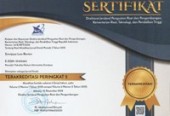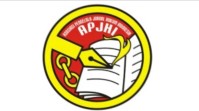Regulatory Support for Biosequestration Projects in Australia: A Useful Model for Transition to Net-Zero Emissions?
DOI:
https://doi.org/10.28946/slrev.Vol6.Iss1.1510.pp1-23Keywords:
Biologic carbon seques-tration, Carbon offsets, Climate change, Emis-sions mitigation, Regu-lation.Abstract
This paper considers the effectiveness of Australian regulatory measures to support storing atmospheric carbon in plants and organic matter in soils (biosequestration), a central element of the Australian greenhouse gas (GHG) emission policy through the Emissions Reduction Fund (ERF). Eligible methodologies under the ERF are broader than those in other jurisdictions. Hence Australian experience may have international application. The functionality of Australian regulation to achieve GHG emissions reduction is considered, focusing on provisions relating to additionality, permanence, monitoring, reporting and verification of emissions bio-sequestration. This analysis is conducted by reviewing key publications by research organisations, academics, government departments, industry organisations, environmental organisations and private sector consultancies. While the integrity of Australian biosequestration offsets is generally well regarded, persistent issues have been identified with regard to the additionality of avoided deforestation methane capture in intensive agriculture and landfill gas projects. The proportion of Australian emissions represented by existing biosequestration offset projects is deficient. These issues must be addressed in order to scale up biosequestration projects as an effective element of Australia's net-zero emissions strategy. It can best be achieved by tightening Safeguard Mechanism baselines to drive demand for carbon credits and funding the Clean Energy Regulator to implement effective, independent MRV. Ongoing regulatory reform will be necessary to address such issues as they arise in the course of the implementation of specific methodologies. Nonetheless, ongoing emissions risks relating to biosequestration and other offset projects can only be adequately addressed by complementary policy to reduce emissions at the source.Downloads
References
Aboriginal Carbon Foundation. “See Aboriginal Carbon Foundation,†n.d. https://www.abcfoundation.org.au/.
Alex McBratney, Budiman Minasney and Edward Jones. “The Untapped Potential of Soil Carbon,†n.d. https://www.sydney.edu.au/news-opinion/news/2020/11/20/untapped-potential-soil-carbon-sequestration-national-agriculture-day.html .
Andrews, Daniel. “Enshrining Victoria’s Ban on Fracking Forever.†media statement Victorian Premier, n.d. https://www.premier.vic.gov.au/sites/default/files/2021-03/210305 - Enshrining Victoria%E2 %80%99s Ban On Fracking Forever.pdf.
Australian Government Department of Agriculture. “Water and the Environment, Soil Carbon Research: Key Findings,†n.d. https://www.agriculture.gov.au/ag-farm-food/climatechange/australias-farming-future/climate-change-and-productivity-research/soil_carbon .
Australian Government Department of Industry, Science, Energy and Resources ‘Australia’s Long-Term Emissions Reduction Plan: A Whole-of-Economy Plan to Achieve Net Zero Emissions by 2050,’†2021. https://www.industry.gov.au/sites/default/files/October 2021/document/australias-long-term-emissions-reduction-plan.pdf.
Australian Commonwealth Department of Industry. “Science, Energy and Resources.†Climate Active, n.d. https://www.industry.gov.au/regulations-and-standards/climate-active.
Barnard, Michael. “Carbon Capture’s Global Investment Would Have Been Better Spent on Wind & Solar.†21 april 2019, n.d. https://cleantechnica.com/2019/04/21/carbon-captures-global-investment-would-have-been-better-spent-on-wind-solar/?fbclid=iwar0t-vf6haucbtkic9jtwkc7gtb-wuhkomhsqlsfegdnfunacvvgyomk2w0.
Bell-James, Justine. “Developing a Framework for ‘Blue Carbon’ in Australia: Legal and Policy Considerations.†University of New South Wales Law Journal 39, no. 4 (2016): 1583,1591.
Burke, Paul J. “Undermined by Adverse Selection: Australia’s Direct Action Abatement Subsidies.†Economic Papers 3, no. 35 (2016): 216,223. https://onlinelibrary.wiley.com/doi/epdf/10.1111/1759-3441.12138.
Carbon Market Institute. “Carbon Farming Industry Roadmap – Queensland (CMI Report for the Queensland Government,†2020, 10. https://www.qld.gov.au/__data/assets/pdf_file/0026/105749/carbon-farming-industry-roadmap.pdf.
———. “Nature Based Investment in the Asia-Pacific Region, Scoping Study (Report for the Australian Department of Agriculture, Water and the Environment.†Department of Agriculture, Water and the Environment, Australia, no. June (2021): 8. https://carbonmarketinstitute.org/app/uploads/2021/06/FINAL-Nature-Based-Investment-in-the-APAC-Region-Scoping-Study-June-2021.pdf .
———. “Australian Carbon Industry Code of Conduct†2, no. 2 (2021): 2.3. https://carbonmarketinstitute.org/app/uploads/2021/08/Australian-Carbon-Industry-Code-of-Conduct-Version-2.0-FINAL.pdf.
———. “Australian Carbon Industry Code of Conduct Fact Sheet,†no. June (2021): 5. https://carbonmarketinstitute.org/app/uploads/2021/06/FINAL-Code-of-Conduct-Fact-Sheet-June-2021.pdf.
———. “Australian Emissions Reduction Investors Set Their Eyes on Asia Pacific Climate Action.†CMI medi, n.d. https://carbonmarketinstitute.org/2021/06/24/australianemissions-reduction-investors/.
———. “Carbon Market Institute,†n.d. http://carbonmarketinstitute.org/about/.
———. “Registry,†n.d. http://marketplace.carbonmarketinstitute.org/ http://marketplace. carbonmarketinstitute.org/registry/.
———. “Time for Carbon Market to Scale-up as Corporates Commit to Net-Zero,†n.d. https://carbonmarketinstitute.org/2021/09/10/time-for-carbon-farming-to-scale-up-as-corporates-commit-to-net-zero-emissions/.
———. “Time for Carbon Market to Scale-up as Corporates Commit to Net-Zero.†media release 20 September 2021, n.d. https://carbonmarketinstitute.org/2021/09/10/time-for-carbon-farming-to-scale-up-as-corporates-commit-to-net-zero-emissions/.
———. “World First Australian Carbon Industry Code of Conduct Now Fully Operational.†CMI media, n.d.
“Carbon Neutral Standard for Organisations†4, no. 1 (n.d.): 37.
Clean Energy Regulator. “Buying ACCUs,†n.d. http://www.cleanenergyregulator.gov.au/ Infohub/Markets/Pages/Buying-ACCUs.aspx.
———. “Carbon Farming Initiative,†n.d. http://www.cleanenergyregulator.gov.au/Infohub/CFI/ Carbon-Farming-Initiative.
———. “Carbon Maintenance Obligations,†n.d. http://www.cleanenergyregulator.gov.au/ERF/ Choosing-a-project-type/Opportunities-for-the-land-sector/carbon-maintenance-obligations.
———. “Climate Solutions Fund,†n.d. http://www.cleanenergyregulator.gov.au/csf/Pages/CSF-home.aspx.
———. “Compliance and Enforcement Approach,†n.d. http://www.cleanenergyregulator.gov.au/ About/Compliance-and-Enforcement/compliance-and-enforcement-approach.
———. “Emissions Reduction Fund,†n.d. http://www.cleanenergyregulator.gov.au/ERF.
———. “ERF Auction 2021,†n.d. http://www.cleanenergyregulator.gov.au/ERF/auctions-results/april-2021.
———. “Monitoring and Enforcement,†n.d. http://www.cleanenergyregulator.gov.au/ERF/Want-to-participate-in-the-Emissions-Reduction-Fund/Monitoring-and-enforcement.
———. “Opportunities for the Land Sector,†n.d. http://www.cleanenergyregulator.gov.au/ERF/ Choosing-a-project-type/Opportunities-for-the-land-sector.
———. “Participant Obligations,†n.d. http://www.cleanenergyregulator.gov.au/ERF/Want-to-participate-in-the-Emissions-Reduction-Fund/Planning-a-project/participant-obligations.
———. “The Government Program Requirement,†n.d. http://www.cleanenergyregulator.gov.au/ ERF/Want-to-participate-in-the-Emissions-Reduction-Fund/Planning-a-project/regulatory-additionality-and-government-programs#government-program-requirement.
Climate Active. “How It Works,†n.d. https://www.climateactive.org.au/what-climate-active/how-it-works.
Climate Change Authority. “Review of the Emissions Reduction Fund,†n.d. https://www.climatechangeauthority.gov.au/publications/review-emissions-reduction-fund-2020.
Council of Australian Governments Energy. “Australia’s National Hydrogen Strategy,†2019. https://www.industry.gov.au/data-and-publications/australias-national-hydrogen-strategy.
Crossley, Penelope J. Designing Sustainable Development - The Effectiveness of PV Solar Regulation in Australia and China. Asia Pacific Journal of Environmental Law 15. Vol. 1, 2013.
Department of Industry, Science, Energy and Resources. “Australian Government Response to the Final Report of the Expert Panel Examining Additional Sources of Low-Cost Abatement (the King Review)†2, no. 10 (2020). https://www.industry.gov.au/data-and-publications/government-response-to-the-expert-panel-report-examining-additional-sources-of-low-cost-abatement.
Durrant, Nicola. “Legal Issues in Carbon Farming: Biosequestration, Carbon Pricing and Carbon Rights.†Climate Law 2, no. 4 (2011): 515,525.
“For Information on the Soil Carbon Research Program See Commonwealth Scientific and Industrial Research Organisation,†n.d. https://csiropedia.csiro.au/soil-carbon-research-program/.
Friedlander, Blaine. “Study: Fracking Prompts Global Spike in Atmospheric Methane.†14 August 2019, n.d. https://news.cornell.edu/stories/2019/08/study-fracking-prompts-global-spike-atmospheric-methane.
Garnaut, Ross. Superpower: Australia’s Low-Carbon Opportunity. La Trobe University Press, 2019.
Gilligan, Baxter and George. “Verification and Australia’s Emissions Reduction Fund: Integrity Undermined Through the Landfill Gas Method?†Australian Journal of Environmental Law 4, no. 1 (2017): 16.
Intergovernmental Panel on Climate Change. Climate Change and Land: An International Panel on Climate Change Special Report on Climate Change, Desertification, Land Degradation, Sustainable Land Management, Food Security, and Greenhouse Gas Fluxes in Terr,†2020. https://www.ipcc.ch/site/assets/uploads/sites/4/2020/02/SPM_Updated-Jan20.pdf.
International Energy Agency. “Net Zero by 2050: A Roadmap for the Global Energy Sector (May 2021), CCUS,†n.d. https://www.iea.org/reports/net-zero-by-2050f.
MacTiernan, Alannah. "$15 Million Boost for Carbon Farming Projects." media statement, Western Australian Minister for Regional Development; Agriculture and Food and Hydrogen Industry, n.d. https://www.mediastatements.wa.gov.au/Pages/McGowan/2021/07/15-million-dollar-boost-for-carbon-farming-projects.aspx.
McKenzie, Baker and. “Big Shake-up Planned for Australia’s Carbon Market.†12 June 2020, n.d. https://www.bakermckenzie.com/en/insight/publications/2020/06/big-shake-up-planned-for-australias-carbon-market.
Murphy, Katherine. “Anthony Albanese Commits Labor to Emissions Reduction Target of 43% by 2030.†The Guardian, 2021. https://www.theguardian.com/australia-news/2021/dec/03/anthony-albanese-commits-labor-to-emissions-reduction-target-of-43-by-2030.
National Farmers Federation. 2030 Roadmap: Australian Agriculture’s Plan for a $100 Billion Dollar Industry,†2020. https://nff.org.au/wp-content/uploads/2020/02/NFF_Roadmap_2030_FINAL.pdf.
Report of the Expert Panel Examining Additional Sources of Low-cost Abatement. “(Report for the Australian Department of Industry, Science, Energy and Resources.†14 February 2020, n.d. https://www.industry.gov.au/news/expert-panel-identifies-opportunities-to-reduce-emissions.
Paris Agreement. opened for signature 22 April 2016 [2016] ATS 24 (entered into force 4 November 2016), [4.1]. (n.d.).
Potter, Ben. “Labour’s Safeguard Mechanism 2.0 Explained.†Australian Financial Review, n.d. https://www.afr.com/policy/energy-and-climate/labor-s-safeguard-mechanism-2-0-explained-20190401-p519q0.
Rayfuse, Rosemary. “‘Drowning Our Sorrows to Secure a Carbon Free Future – Some International Legal Considerations Relating to Sequestering Carbon Fertilising the Oceans.’†University of New South Wales Law Journal, no. 31 (2008): 919,920.
Recovery, Gas Fired. “Media Release of the Australian Prime Minister, Minister for Energy and Emissions Reduction, Minister for Resources.†Water and Northern Australia, n.d. https://www.pm.gov.au/media/gas-fired-recovery.
Santos, Climate Change Report 2021. “Report Highlights, 1,†n.d. https://www.santos.com/wp-content/uploads/2021/02/2021-Climate-Change-Report.pdf.
The CCA is a statutory body established by the Australian Government. “It Provides Reports on Request of the Australian Government, and Conducts Independent Its Own Independent Re-Search Analysis,†n.d. https://www.climatechangeauthority.gov.au/about-cca .
“The Emissions Reduction Fund and Permanence on the Land,†n.d. Link on above URL.
Verschuuren, Jonathan. “Towards a Regulatory Design for Reducing Emissions from Agriculture: Lessons from Australia’s Carbon Farming Initiative.†Climate Law 7, no. 1 (2017): 6–7.
Wilder, Arjuna Dibley and Martijn. “Forest Carbon Rights: Lessons Learned from Austraia and New Zealand.†Carbon and Climate Law Review 10, no. 3 (2016): 202-209.
World Bank Group. “International Carbon Action Partnership and Navigant Consulting, State and Trends of Carbon Pricing 2019 (June 2019),†n.d., 29. https://openknowledge.worldbank.org/handle/10986/31755.
Zomer, R.J., Bossio, D.A., Sommer, R. et al. “Global Sequestration Potential of Increased Organic Carbon in Cropland Soils.†Scientific Reports 7, 2017, 15554. https://doi.org/10.1038/s41598-017-15794-8.















